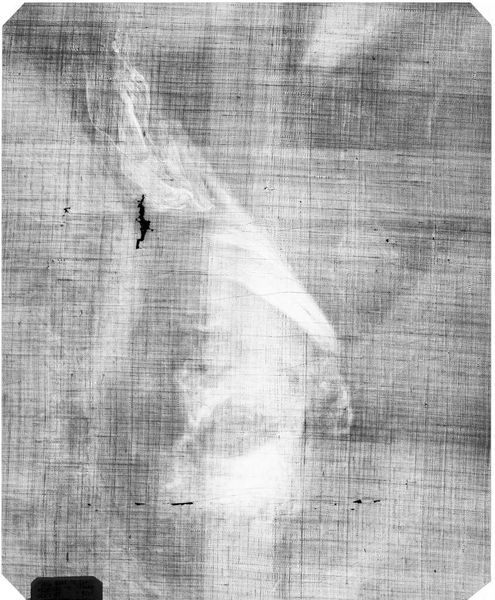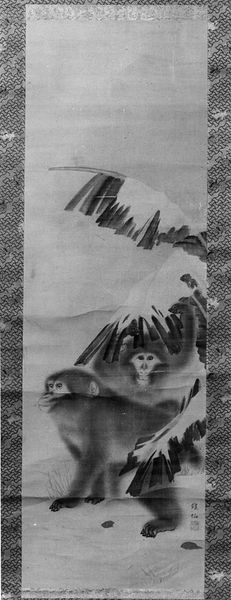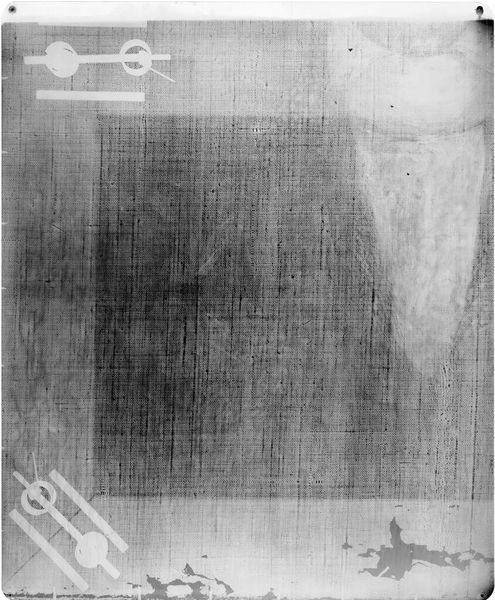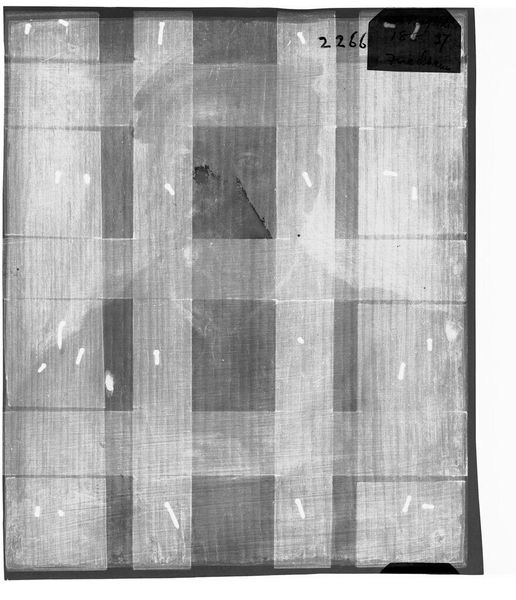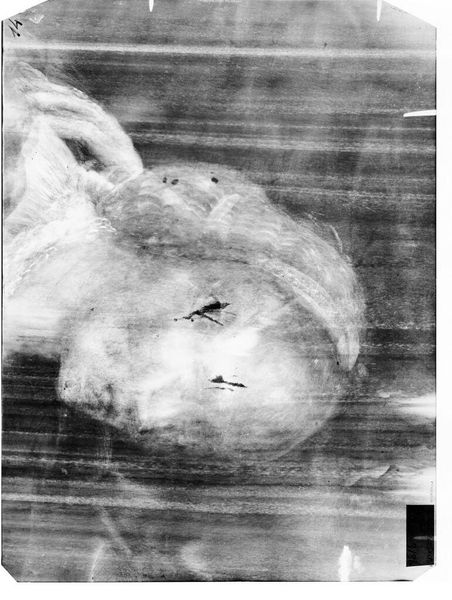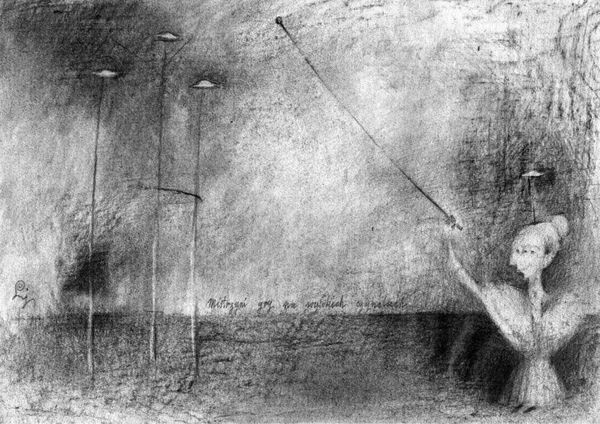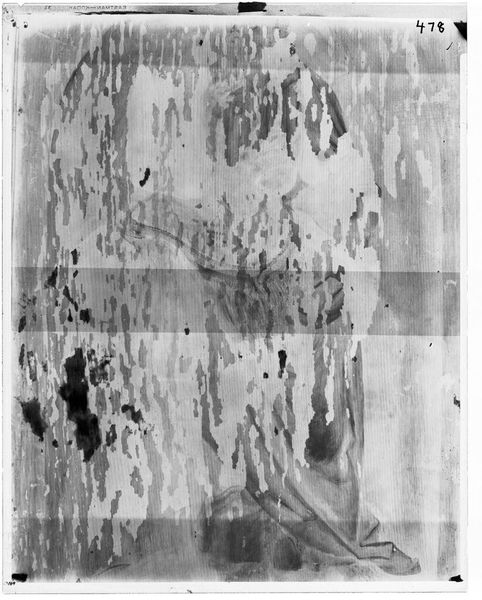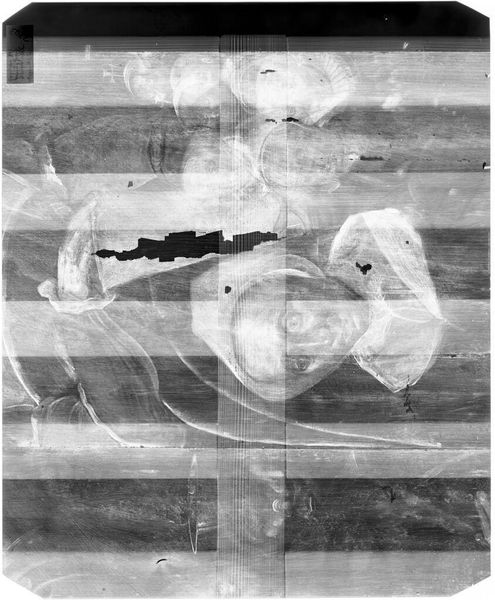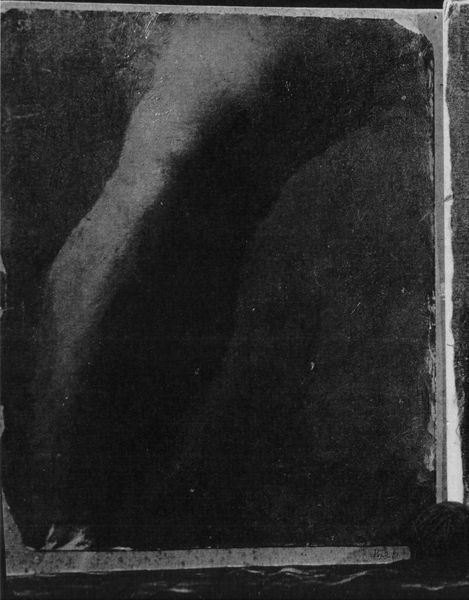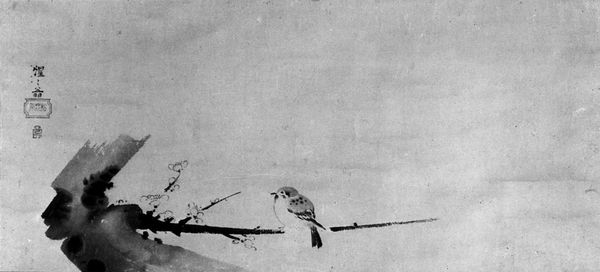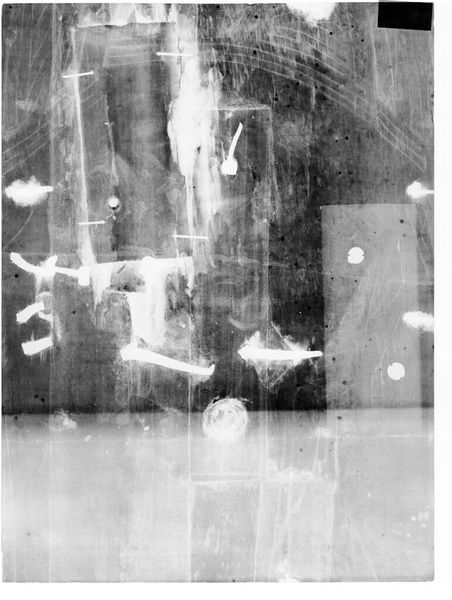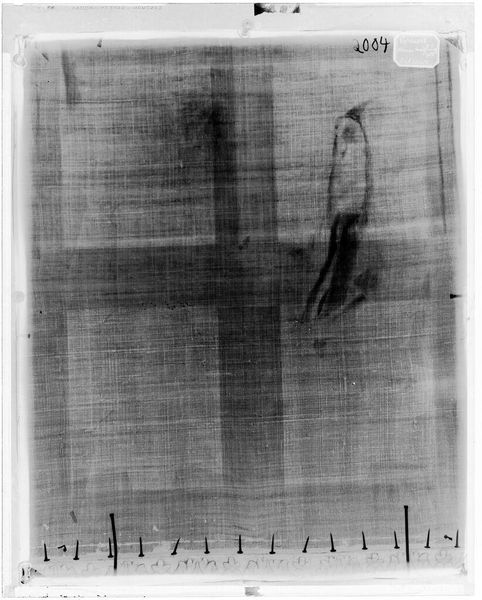
Eaves Decorated with Irises for the Tango Festival 1867
0:00
0:00
drawing, paper, ink, charcoal
#
drawing
#
asian-art
#
landscape
#
charcoal drawing
#
paper
#
ink
#
line
#
charcoal
#
charcoal
Dimensions: 46 5/8 x 15 1/2 in. (118.4 x 39.4 cm)
Copyright: Public Domain
Kikuchi Yōsai created this ink on paper work called "Eaves Decorated with Irises for the Tango Festival", sometime in the 19th century. Here, we see the eaves of a building adorned with irises for the Tango Festival, a scene imbued with rich symbolism. In Japanese culture, the iris, or "shobu," is not merely a flower but a potent emblem, traditionally associated with the celebration of the Boys' Festival, now known as Children's Day. The iris symbolizes strength and health, its leaves resembling swords, thereby invoked to ward off evil spirits and promote vitality in young boys. This mirrors ancient Greek practices where the iris, named after the goddess of the rainbow, was linked to communication between gods and humans. The image thus oscillates between protection and aspiration. The Tango Festival, celebrated on the fifth day of the fifth month, bridges the mundane and the sacred. This artistic rendering speaks to the cyclical nature of symbols, their ability to resurface, evolve, and accrue new meanings across different eras, deeply engaging our subconscious.
Comments
No comments
Be the first to comment and join the conversation on the ultimate creative platform.

